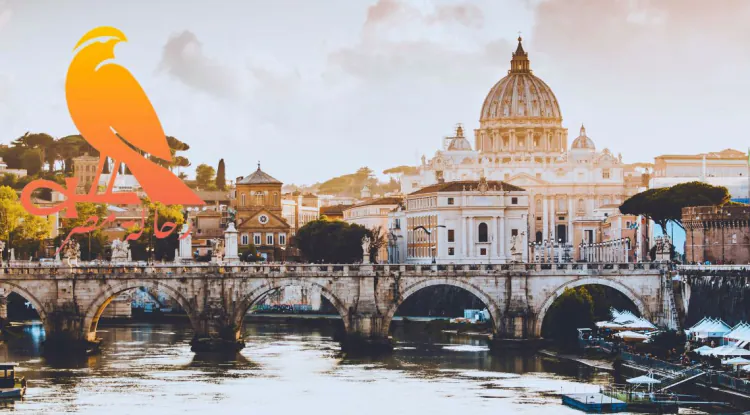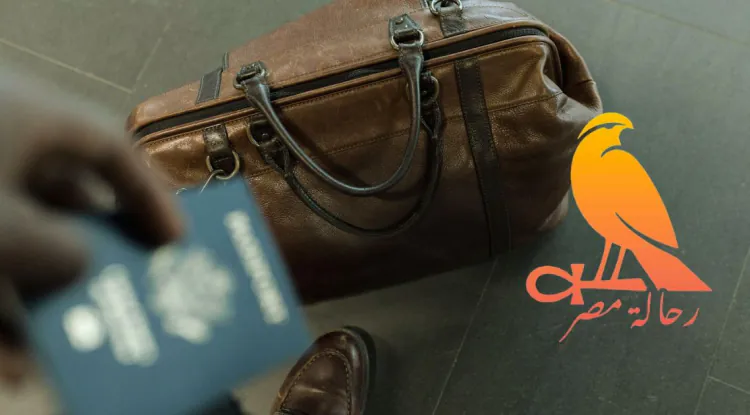Personalized Travel Itineraries: Tailored for Your Adventure
Plan the perfect road trip with our comprehensive guide featuring expert road trip planning tips.

Road Trip Planning Tips
What makes a road trip unforgettable? Is it the scenic views, local spots, or the freedom to explore? Planning a road trip is all about creating a travel plan that fits your style. With the right tips, your trip can be an experience you'll always remember.
Whether you're a seasoned traveler or new to road trips, a good plan is key. You need to research places, budget, and choose the right car. With the right planning, your trip will be smooth and fun.
Key Takeaways
- Personalized travel itineraries are essential for a successful road trip
- Researching local attractions and scenic routes can enhance your experience
- Effective budgeting and vehicle selection are critical for a smooth journey
- Crafting a flexible itinerary allows for spontaneity and adaptability
- Incorporating road trip planning tips and road trip itinerary ideas can make your trip unforgettable
Understand Your Destination
Planning a road trip means knowing your destination well. Look into local attractions and scenic routes to make your trip better. This way, you can plan a trip that fits your interests perfectly.
Start by using online resources and travel guides to find top spots. Local tips can also give you a deeper look into the area's culture. This helps you plan a trip with both famous places and hidden gems.
- Climate and weather conditions
- Local customs and traditions
- Must-see attractions and landmarks
- Scenic routes and drives
- Accommodation options and dining experiences
Understanding your destination makes your road trip unique. Whether you want adventure, relaxation, or culture, a good plan ensures you enjoy the best spots.
| Destination | Attractions | Scenic Routes |
|---|---|---|
| Grand Canyon | South Rim, North Rim, Colorado River | Desert View Drive, Hermit Road |
| Yellowstone National Park | Old Faithful, Grand Prismatic Spring, Yellowstone Lake | Grand Loop Road, Beartooth Highway |
| Pacific Coast Highway | Big Sur, Monterey, Santa Barbara | US-101, CA-1 |
Budgeting for Your Trip
Planning a road trip means thinking about money to make sure it's fun. First, figure out how much fuel will cost. Look at how far you'll go, your car's gas mileage, and fuel prices. This helps you set aside enough for gas.
Next, think about where you'll stay. There are many choices, from camping to hotels. Look up prices to find something that fits your budget. Don't forget to include money for food, activities, and surprises.
- Track your expenses to stay within your budget
- Research free or low-cost activities and attractions
- Take advantage of discounts and promotions
By using these tips and looking at different places to stay, you can make a budget that works. This way, your trip will be enjoyable and worry-free.
Choosing the Right Vehicle
Choosing the right vehicle is key for a great road trip. Think about how many people will ride, how much stuff you'll carry, and the road conditions. Also, look for a vehicle with a strong engine, good brakes, and comfy seats.
Balance comfort with cost. A fancy car might be comfy but pricey. A budget-friendly car might not be as comfy for long trips. SUVs, vans, and trucks are good choices. They mix comfort, space, and fuel savings well.
Equipment for Long Drives
Choosing the right vehicle is just the start. You also need the right gear for long drives. This includes safety items like a first aid kit, spare tire, and GPS. A roadside emergency kit can also give you peace of mind.
- A comfortable seating arrangement
- A good sound system
- A cooler for snacks and drinks
- A portable charger for your devices
By thinking about these things and getting the right gear, you can have a safe and fun road trip.
| Vehicle Type | Comfort Level | Fuel Efficiency |
|---|---|---|
| SUV | High | Medium |
| Van | Medium | High |
| Truck | Low | Low |
Creating a Flexible Itinerary
Planning a road trip means having a flexible plan. This is where road trip itinerary ideas help. They balance planned activities with free time. This way, you can enjoy your trip and discover new things.
A good road trip itinerary mixes planned and spontaneous moments. Use road trip planning tips like researching local spots and exploring scenic routes. Also, leave some room for flexibility in your schedule. This lets you adjust plans and enjoy unexpected detours or weather changes.
- Using technology to make real-time adjustments to your itinerary
- Checking weather forecasts and traffic updates to plan your route
- Leaving some free time for spontaneous activities or relaxation
Follow these tips and be open to new experiences. This way, you can make a flexible and fun road trip itinerary that suits you.
Packing Essentials
For a road trip, having the right gear is key for comfort and safety. A good packing list ensures you have everything. This includes first-aid kits, emergency tools, and food. It's important to pack smart to save space in your car.
Being ready for any situation is part of road trip safety. You'll need a basic toolkit, spare tires, and a roadside emergency kit. Also, a cooler with snacks and meals keeps you energized. A well-thought-out packing list and safety items make for a fun trip.
Must-Have Road Trip Gear
- First-aid kit
- Emergency tools, such as jumper cables and a spare tire
- Comfort items, like blankets and pillows
- Navigation tools, including maps and a GPS device
Food and Snacks for the Road
Healthy snacks and meals keep you satisfied and energized. Include fresh fruit, granola bars, and trail mix in your list. Planning your food ahead ensures a comfortable and enjoyable trip.
Safety First
When planning a road trip, safety is key. Make sure your car is in good shape and you have the right emergency supplies. This way, you can avoid risks and enjoy a safer trip.
Keeping your car in top condition is important. Check the tires, fluids, and brakes before you leave. A well-kept car means fewer breakdowns and accidents, letting you enjoy the trip more.
Car Maintenance Checklist
- Check tire pressure and tread depth
- Verify fluid levels, including oil, coolant, and brake fluid
- Inspect brake condition and replace worn-out pads or rotors if necessary
Emergency Preparedness Kit
An emergency kit is also vital for road trips. It should have jumper cables, flashlights, and basic tools for common problems. Being ready can make a stressful situation easier to handle, keeping your trip on track.
By following these tips, you can make your trip safer and more fun for everyone. Safety is an ongoing effort that needs attention and a proactive mindset. Stay safe and enjoy your travels!
Involving Fellow Travelers
When you're going on a road trip with friends or family, make sure everyone helps plan. Give each person a task, like navigating or picking activities. This way, everyone feels part of the adventure and can share their ideas.
For families, adding road trip activities for kids keeps them happy and busy. Try games, audiobooks, or "I Spy" to keep them entertained. Solo travelers can use solo road trip tips to stay safe and connected, like knowing good rest stops and packing an emergency kit.
Have a group chat or use a shared document to talk about where to go and what to do. This way, everyone's ideas are heard, and the trip fits everyone's style.
By getting everyone involved and planning fun activities, your road trip will be unforgettable. Whether you're with family, friends, or traveling alone, with a little creativity, your trip will be amazing.
| Activity | Age Range | Duration |
|---|---|---|
| Scavenger hunt | 5-12 | 30 minutes |
| Car karaoke | All ages | Variable |
| Travel journal | 8 and up | Ongoing |
Finding Accommodations
There are many choices for road trip accommodations, fitting all budgets and tastes. You can find everything from fancy hotels to cozy motels, vacation homes, campsites, and even glamping. It's key to look up prices, what's included, and where they are to save money.
Some popular places to stay include:
- Hotels: They offer comfort, amenities like pools, and easy access to food and fun.
- Motels: They're cheap and simple, perfect for quick stops on the road.
- Vacation rentals: They feel like home, with kitchens and more room to move around.
- Camping sites: They let you enjoy nature, from simple spots to fancy RV parks.
To get the best deals, try booking sites, loyalty programs, and apps for last-minute bookings. Also, plan your trip to find affordable places without losing out on comfort. Being flexible and doing your homework can make your trip both fun and budget-friendly.
Exploring Dining Options
When you go on a road trip, trying local food is key. It lets you dive into the culture and traditions of each place. With some budgeting tips, you can eat well without spending too much.
Ask locals for the best places to eat or check online for top spots. Regional specialties are a must-try. For instance, in the southern U.S., don't miss out on fried chicken or biscuits and gravy.
Here are some budget-friendly dining tips:
- Make your own meals when you can, using a cooler or portable stove to save money.
- Look for restaurants with affordable specials or discounts, best during off-peak hours.
- Try roadside diners or food trucks for tasty, cheap meals.
By mixing eating out with making your own meals, you can have many tasty, affordable meals on your road trip. This way, you'll enjoy your journey without overspending.
| Dining Option | Average Cost | Recommended For |
|---|---|---|
| Roadside Diners | $10-$15 per meal | Budget-conscious travelers |
| Local Restaurants | $15-$25 per meal | Foodies and those seeking authentic cuisine |
| Preparing Your Own Meals | $5-$10 per meal | Travelers on a tight budget or with dietary restrictions |
Navigating Unfamiliar Areas
Going on a road trip can be tough when you're in new places. But, with the right tools and plans, you can have a safe and fun trip. Using apps for directions and traffic updates is key. Also, keep a paper map handy as a backup.
Knowing about traffic and road closures is important. This is where road trip safety essentials come in. Downloading reliable map apps is a must for up-to-date info.
Apps for Directions and Traffic
- Google Maps: Offers real-time traffic updates and alternative route suggestions.
- Waze: Provides user-contributed traffic information and alerts for police, accidents, and road hazards.
Paper Maps as a Backup
Paper maps are vital when you can't get online. They help plan different routes and understand your journey better.
By using these tips, you can make your road trip planning better. Your trip will be safe and fun, even in places you don't know well.
| Navigation Tool | Description |
|---|---|
| GPS Devices | Provide turn-by-turn directions and real-time traffic updates. |
| Paper Maps | Offer a backup for areas with poor internet connectivity and help in planning alternative routes. |
Entertainment on the Road
Entertainment is key for a fun road trip with kids. Good planning keeps everyone happy on long drives. It's a chance to make memories with family and friends.
Music is a big part of road trip fun. A playlist with popular and classic songs gets everyone singing. Playlists can match different tastes, and podcasts offer a variety of stories.
For kids, games are the best way to stay entertained. Some top picks are:
- I Spy
- 20 Questions
- License Plate Game
These games are simple, need little equipment, and everyone can play. They also help passengers interact and work together.
Audiobooks and games are great, but don't forget about music and talking. Mixing these activities makes the trip memorable.
| Activity | Age Group | Equipment Needed |
|---|---|---|
| I Spy | All ages | None |
| 20 Questions | All ages | None |
| License Plate Game | All ages | None |
Documenting Your Journey
Starting your road trip means capturing memories and experiences that make it special. With good planning, your trip can be both fun and well-documented. Preserving moments from your journey makes it unforgettable.
There are many ways to document your trip. Start by taking photos of beautiful landscapes and interesting spots. Photography tips for road trips include using the right lighting and angles. Also, keep a travel journal to write down your thoughts and feelings.
Travel journals help you reflect on your journey and relive memories. They're also useful for planning your trip. By using these methods, you'll have a unique record of your travels.
Other ways to share your journey include starting a travel blog or posting on social media. These platforms let you share photos and stories. This way, you can inspire others to go on their own road trips.
Staying Healthy on the Road
When you start a road trip, keeping healthy is key. It's not just about having safety items like first aid kits. Adding healthy habits to your trip planning makes it safer and more fun.
Eating right is a big part of staying healthy on the road. It can be tough, with limited choices at rest stops. But, packing healthy snacks and making smart food choices keeps you energized and healthy. Good snacks include fruits, nuts, and energy bars.
Tips for Healthy Eating
- Pack a cooler with fresh fruits and vegetables
- Choose restaurants that offer healthy options
- Avoid sugary and processed snacks
Being active during breaks is also important. It helps your body and mind. Just a short walk or some stretching at a rest stop can help. Adding physical activity to your trip makes it safer and happier.
Keeping Active During Breaks
Here are some ways to stay active during breaks:
- Taking a short hike or walk
- Doing some stretching exercises
- Playing games that involve physical activity, such as frisbee or soccer
By focusing on your health, you'll have a great road trip. Make sure to include safety items and healthy habits in your planning. This way, you'll enjoy your journey even more.
| Healthy Habits | Benefits |
|---|---|
| Eating nutritious food | Boosts energy levels, supports overall health |
| Staying active during breaks | Reduces risk of blood clots, improves circulation, boosts mood |
Enjoying Nature
As you start your road trip, make sure to enjoy the stunning natural views around you. You'll find scenic spots and national parks that let you connect with nature. These places offer amazing landscapes, hiking trails, and unique rock formations.
For nature lovers, visiting national parks is a must. These parks have lots of activities like hiking, camping, and wildlife watching. Don't forget to buy a park pass for easy access to many parks. You can also choose from simple backcountry sites to campgrounds with all the comforts.
Scenic Stops Along the Way
Along your journey, there are many scenic stops to check out. These include viewpoints, nature trails, and hidden spots. Adding these stops to your trip will make the drive more enjoyable and let you see beautiful views. Some top stops include:
- Overlooks with panoramic views of the surrounding landscape
- Nature trails that wind through forests, meadows, and other ecosystems
- Waterfalls, lakes, and other bodies of water that offer scenic views and recreational opportunities
National Parks to Consider
Some top national parks to visit are Yellowstone, Yosemite, and the Grand Canyon. Each park has its own special features, like geysers, giant sequoias, and vast canyons. Plan your visit by checking the best times to go and any needed permits or reservations. With some planning, you'll have a great time in these beautiful natural spots.
Planning for Weather Changes
When planning a road trip, the weather is key. Look up the climate and weather patterns of your destination and the route. This helps you prepare for any weather and makes your trip safe and fun.
A good road trip packing list includes gear for different climates. You'll need rain gear, warm clothes, sun protection, and cool accessories. Packing smart lets you handle any weather, ensuring you have what you need.
Adapting Your Itinerary
Being flexible with your plans is important. Unexpected weather can change your route or activities. Being ready and flexible helps you enjoy your trip, even with bad weather.
Essential Gear for Various Climates
Here are key items for your packing list, based on the climate:
- Rain gear: umbrella, raincoat, waterproof shoes
- Warm layers: fleece, jacket, gloves
- Sun protection: sunscreen, sunglasses, hat
- Cooling accessories: cooling towels, fans, water bottles
By using these tips and making a detailed packing list, you can have a safe and fun trip, no matter the weather. Always put your safety first and be ready for anything.
| Climate | Essential Gear |
|---|---|
| Rainy | Umbrella, raincoat, waterproof shoes |
| Cold | Fleece, jacket, gloves |
| Hot | Sunscreen, sunglasses, hat |
Closing Your Trip
As your road trip ends, think about the memories and experiences you've had. This journey has likely changed your view and helped you grow in unexpected ways. Reflect on the best moments, the tough times, and what you learned.
Preserving Your Memories
Whether you traveled alone or with friends, gather your photos, journal entries, and keepsakes. Make a photo album, scrapbook, or digital slideshow to relive your trip. This way, you can share your journey with others and keep it close to your heart.
Sharing Your Adventure
Don't keep your road trip to yourself! Host a gathering to share your story, whether it's a big presentation or a casual hangout. Invite others to share their travel tales too. This builds a community and encourages more people to plan their own road trips.
As you go back to your daily life, remember the lessons from your trip. The open road opens up new possibilities. The memories you've made will remind you to keep exploring and growing.
Planning a successful road trip involves several key steps. First, research your destination to find the best spots to visit. Next, create a budget to manage your expenses. Choose a vehicle that suits your needs and plan a flexible itinerary. Personalizing your trip will make it more enjoyable.
Researching your destination is essential. Use online resources and travel guides to find attractions that interest you. Look for scenic routes to enhance your journey. This will make your trip more immersive and enjoyable.
To budget for your trip, calculate fuel costs based on your vehicle's efficiency and the distance you'll travel. Consider different accommodation options to save money. Remember to include costs for meals, activities, and unexpected expenses in your budget.
When choosing a vehicle, balance comfort and economy. Think about fuel efficiency, storage space, and passenger capacity. Also, make sure your vehicle has the necessary safety gear for long drives.
A flexible itinerary is key to a great road trip. Plan activities but leave room for spontaneity. Use technology to adjust your plans based on weather, traffic, or preferences.
Make a list of must-have items like a first-aid kit and emergency tools. Don't forget to pack food and snacks, including a cooler for perishable items. This will keep you fueled and healthy on the road.
To get your vehicle ready, check tire pressure, fluid levels, and brakes. Also, prepare an emergency kit with jumper cables and flashlights. This will help you handle any unexpected situations.
Getting your travel companions involved makes the trip better for everyone. Assign roles and ask for input on destinations and activities. For trips with kids, plan fun activities to keep them entertained.
There are many accommodation options, from hotels to camping. Research to find the best fit for your budget and preferences. Look for ways to save on booking.
Use navigation apps and technology for directions and traffic updates. But, always have a paper map as a backup. Learning to read maps helps you navigate safely and efficiently.
Create a great playlist and explore podcasts. Have games and activities ready to keep everyone entertained. Balance technology use with other forms of engagement for a better experience.
Document your trip with photography and journaling. Use photography tips for stunning shots and candid moments. A travel journal helps you reflect on your experiences and preserve your journey's details.
Prioritize your health by packing healthy snacks and staying active. Get enough rest and manage stress. Self-care practices ensure a rejuvenating trip.
Plan for scenic stops like viewpoints and national parks. Research activities at these spots to fully enjoy the diverse landscapes. This enhances your road trip experience.
Monitor weather and plan for changes. Pack gear for different climates, from rain to sun protection. Stay flexible and prepared for a safe and enjoyable trip, no matter the weather.
FAQ
What are the key aspects of planning a successful road trip?
How can I research my road trip destination to make the most of my journey?
How do I create a realistic budget for my road trip?
What factors should I consider when choosing the right vehicle for my road trip?
How can I create a flexible road trip itinerary?
What essential items should I pack for my road trip?
How can I ensure my vehicle is road-trip ready?
How can I involve my fellow travelers in the planning process?
What are the different accommodation options available for my road trip?
How can I navigate unfamiliar areas during my road trip?
How can I keep myself and my passengers entertained during long drives?
How can I document my road trip experience?
How can I maintain my health and well-being during a road trip?
How can I incorporate nature and scenic stops into my road trip itinerary?
How can I prepare for and adapt to unexpected weather changes during my road trip?
What's Your Reaction?





















